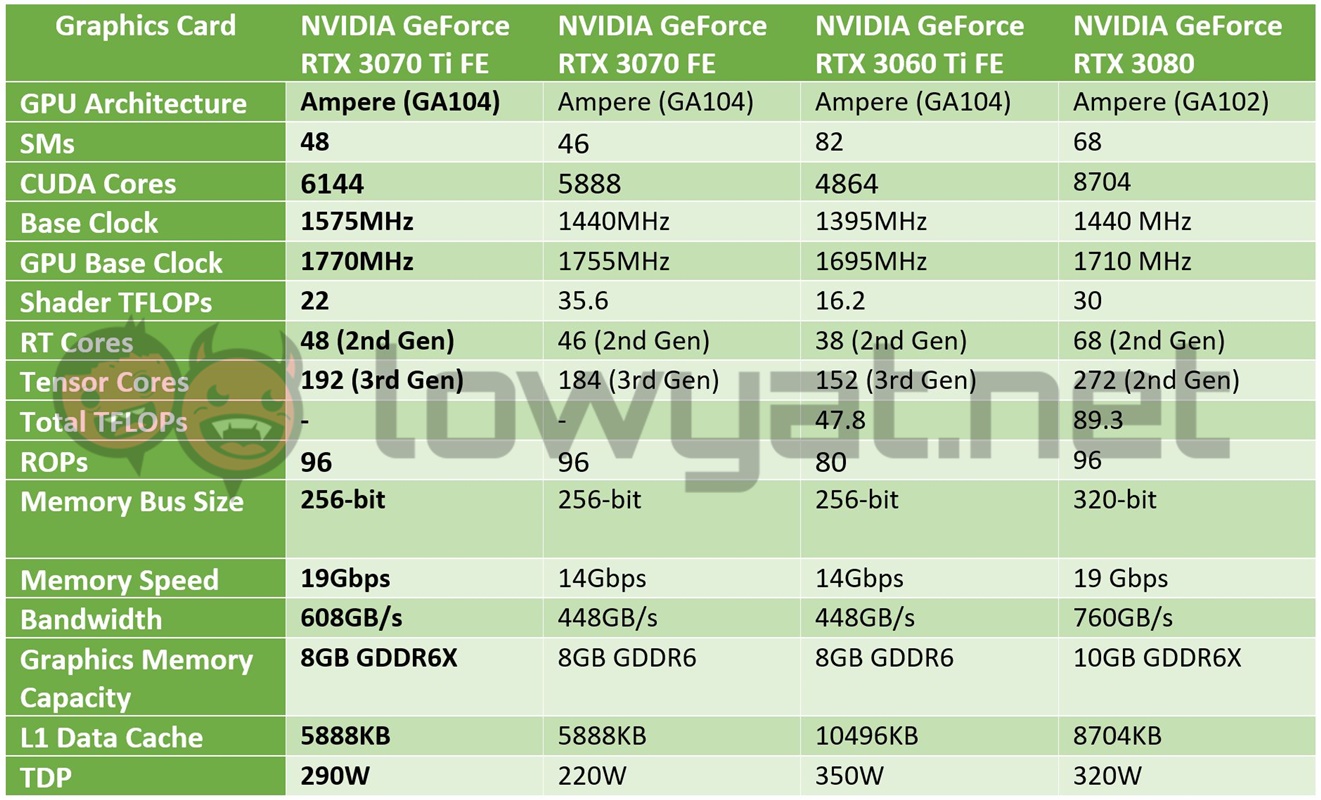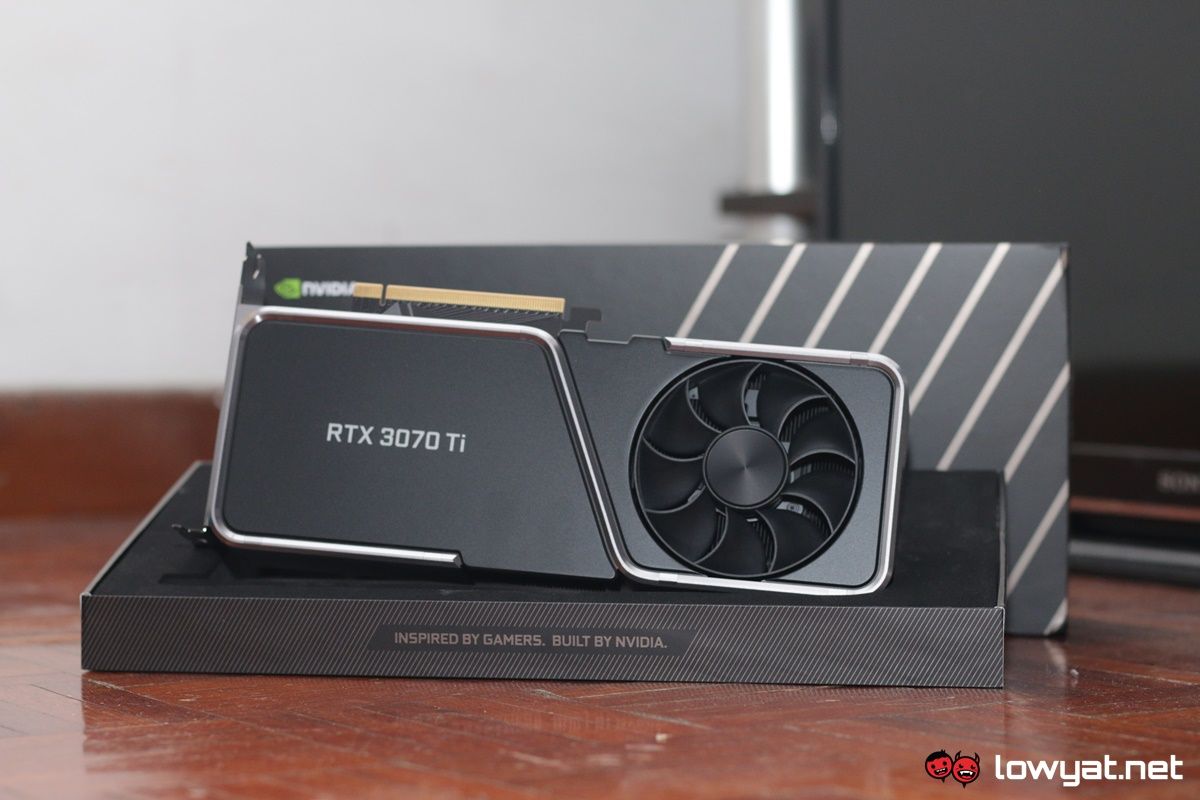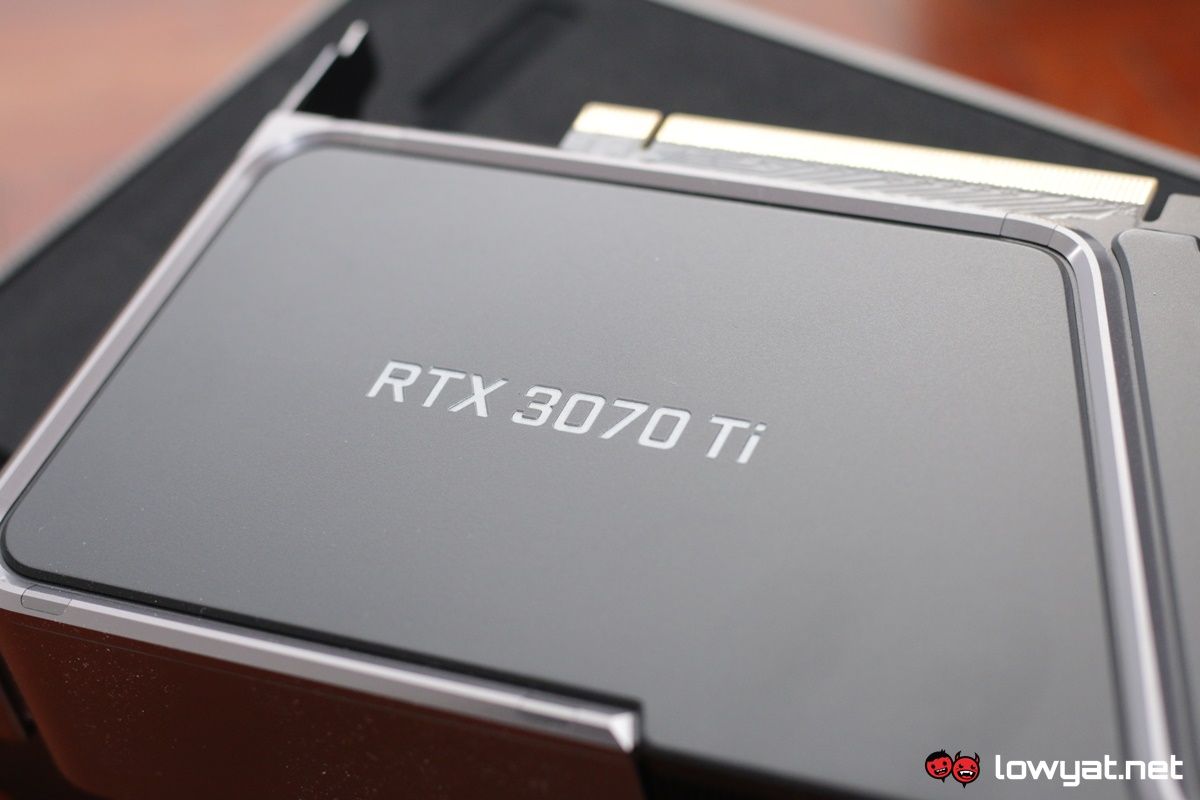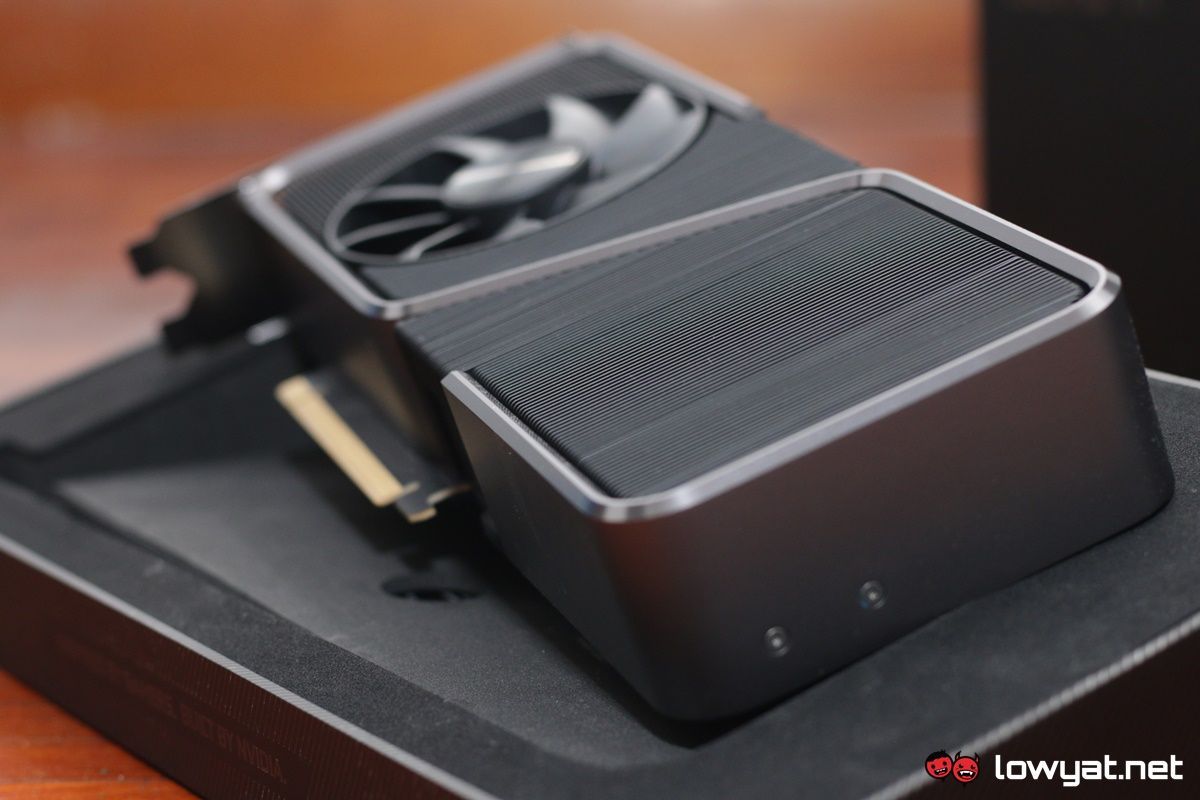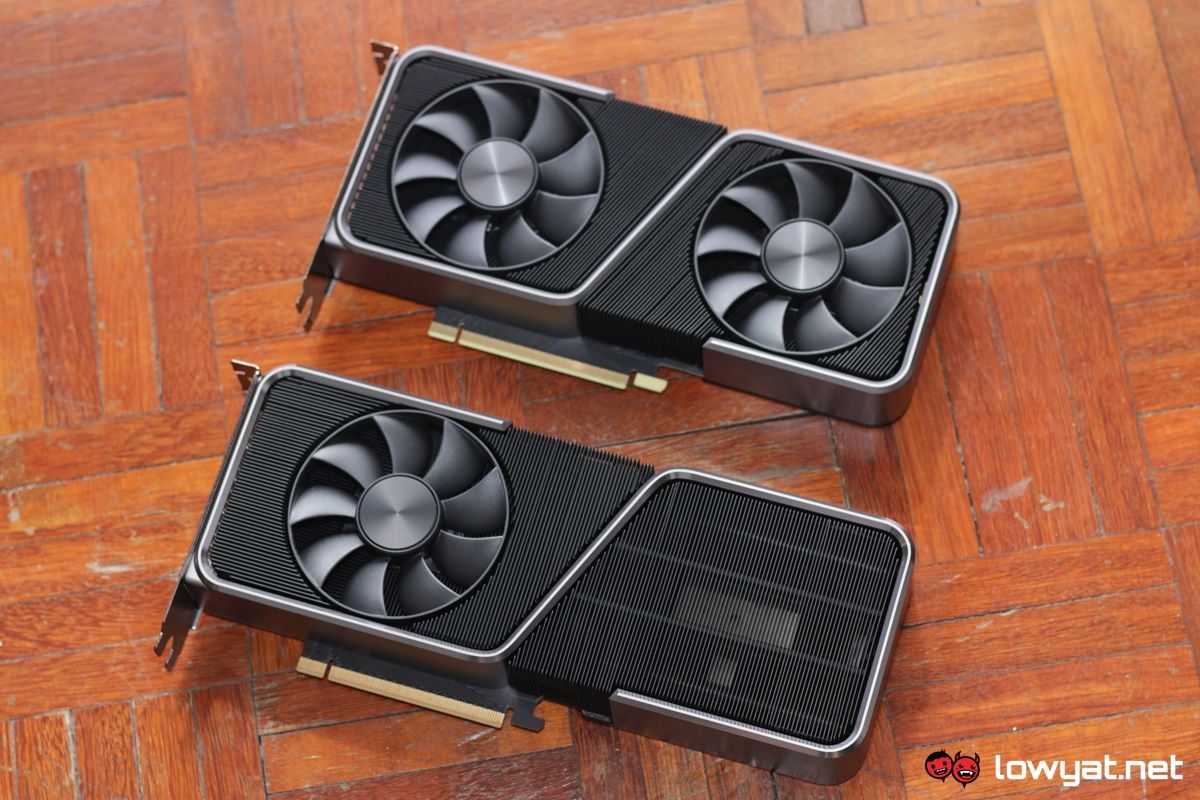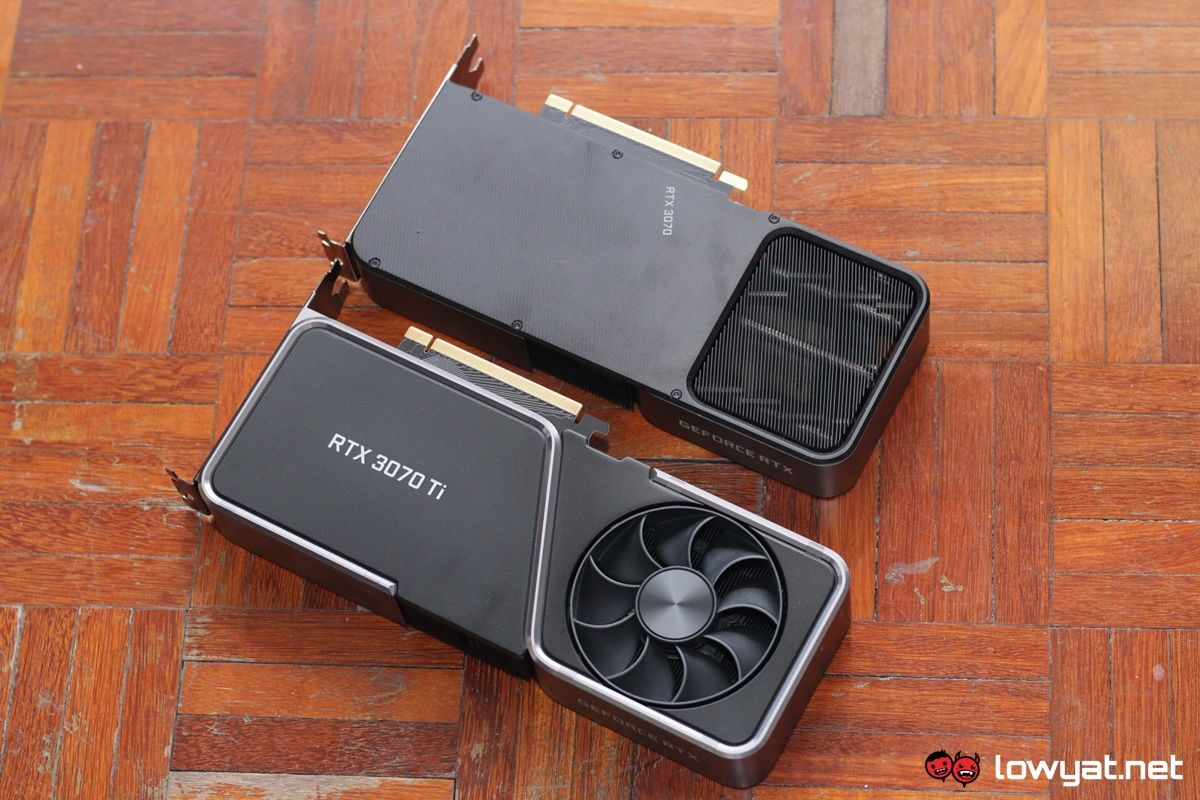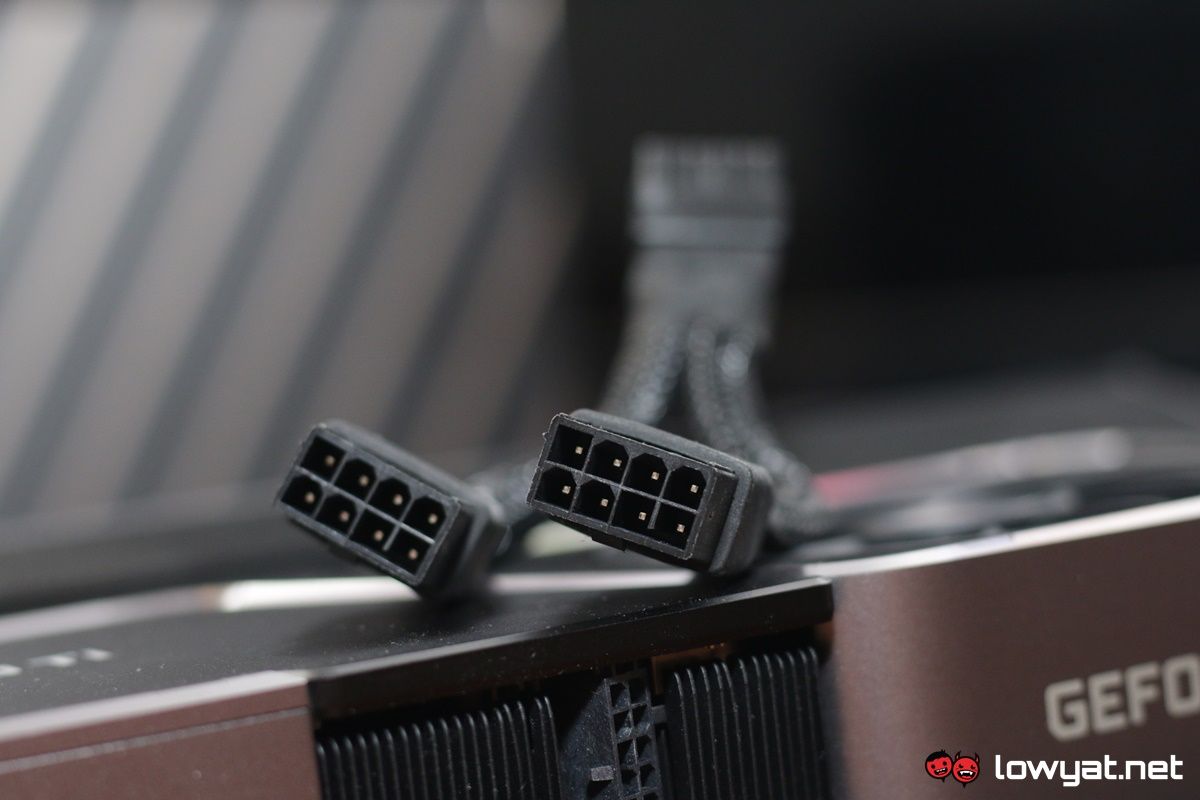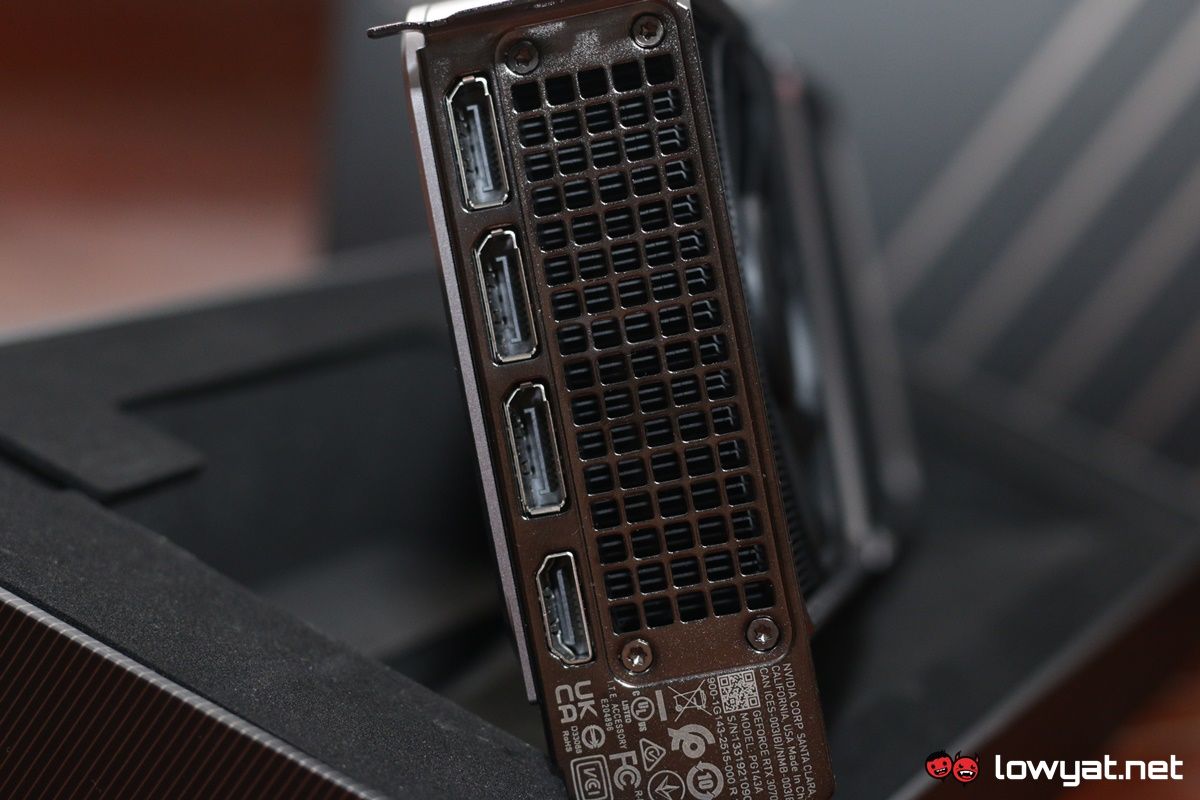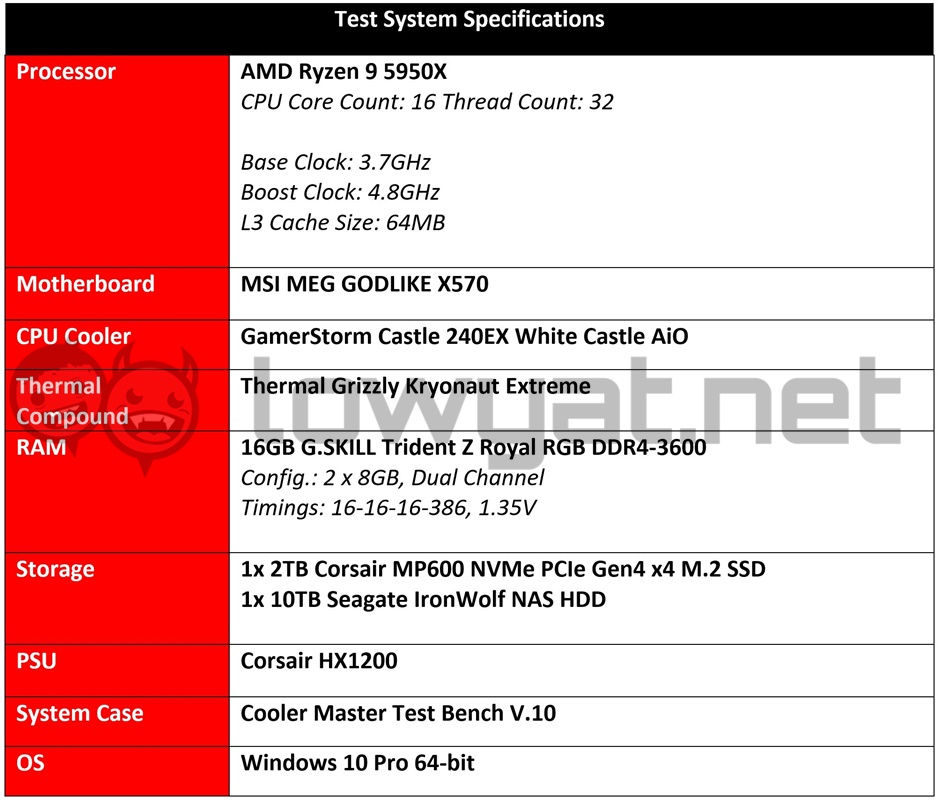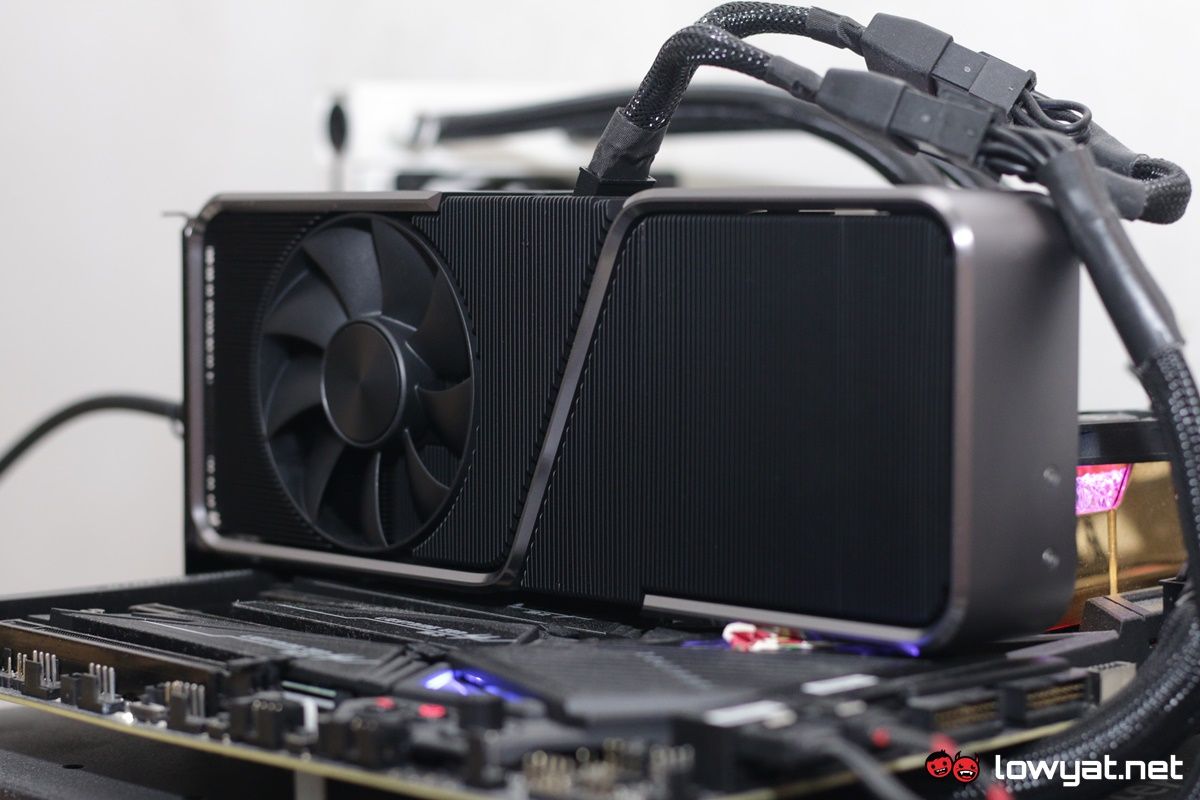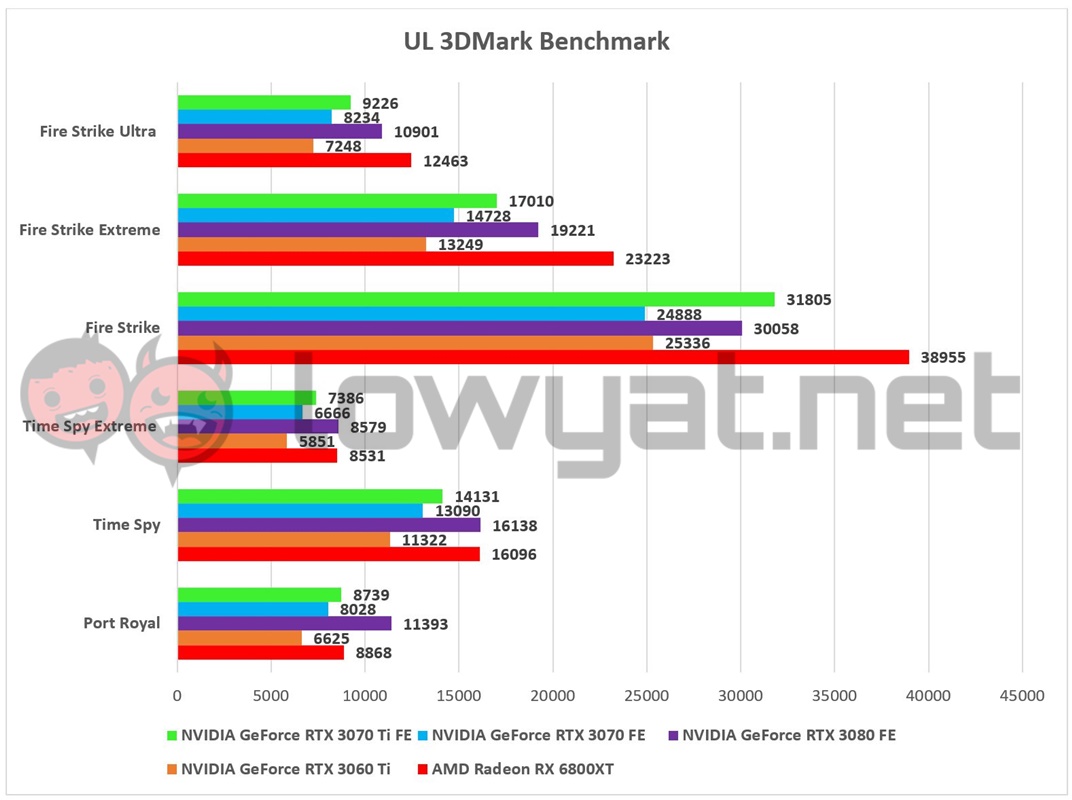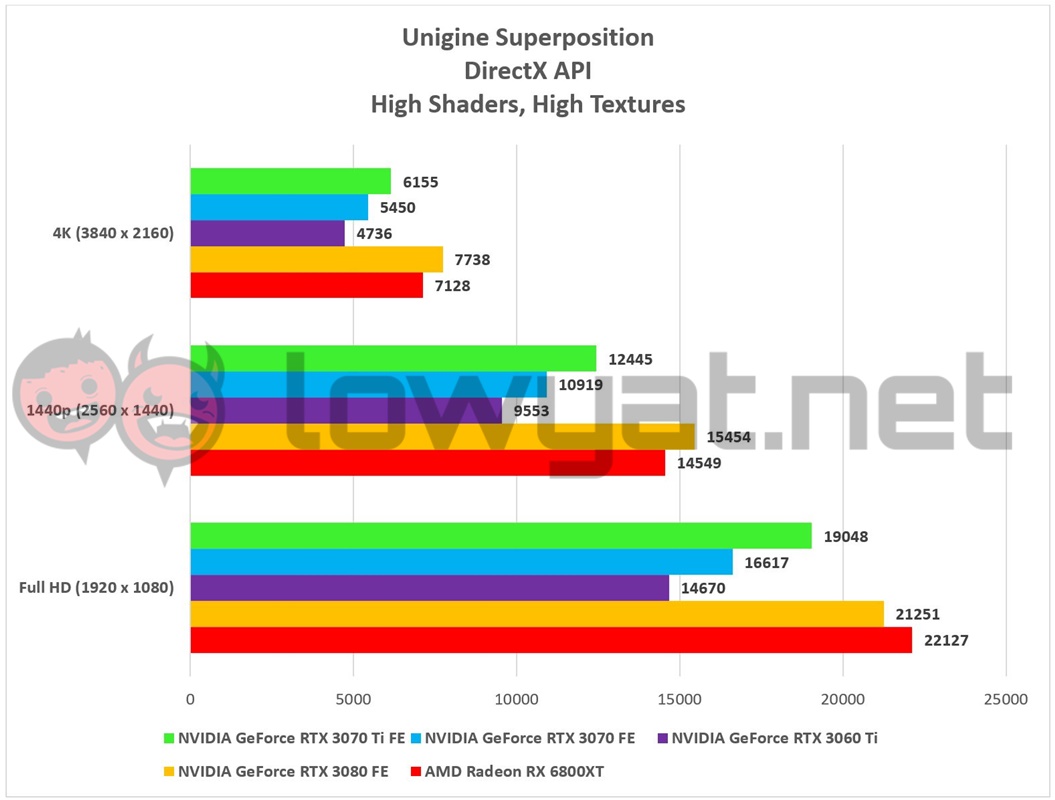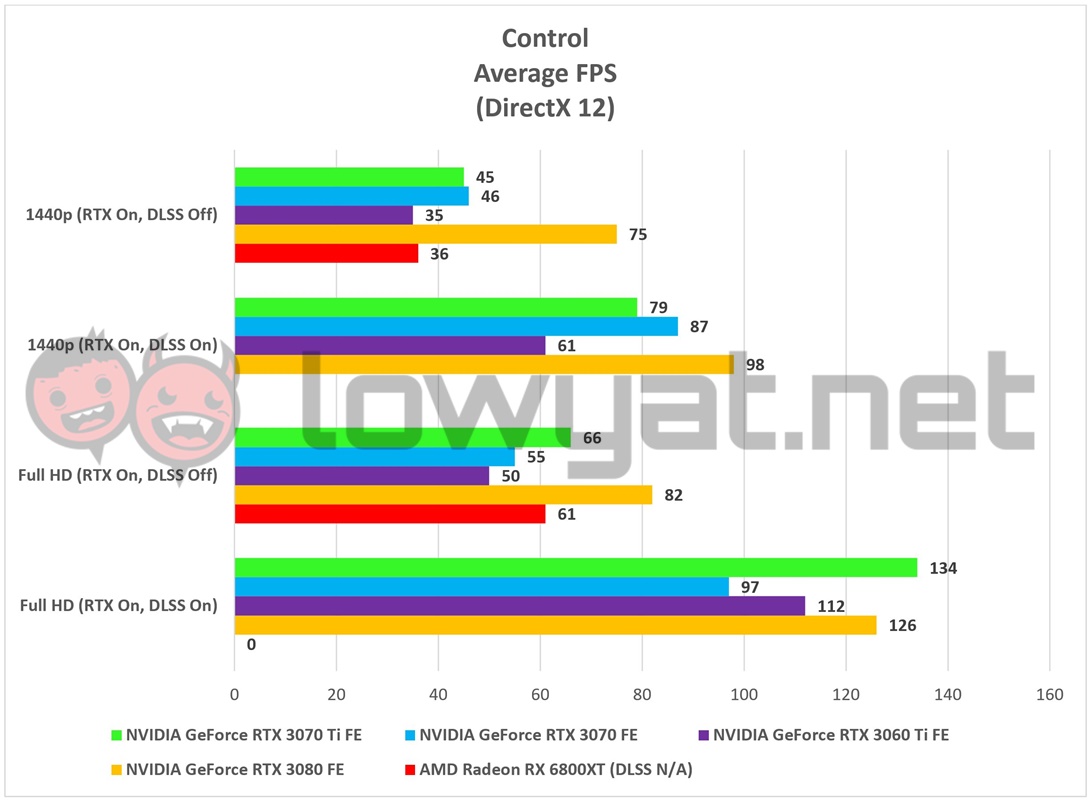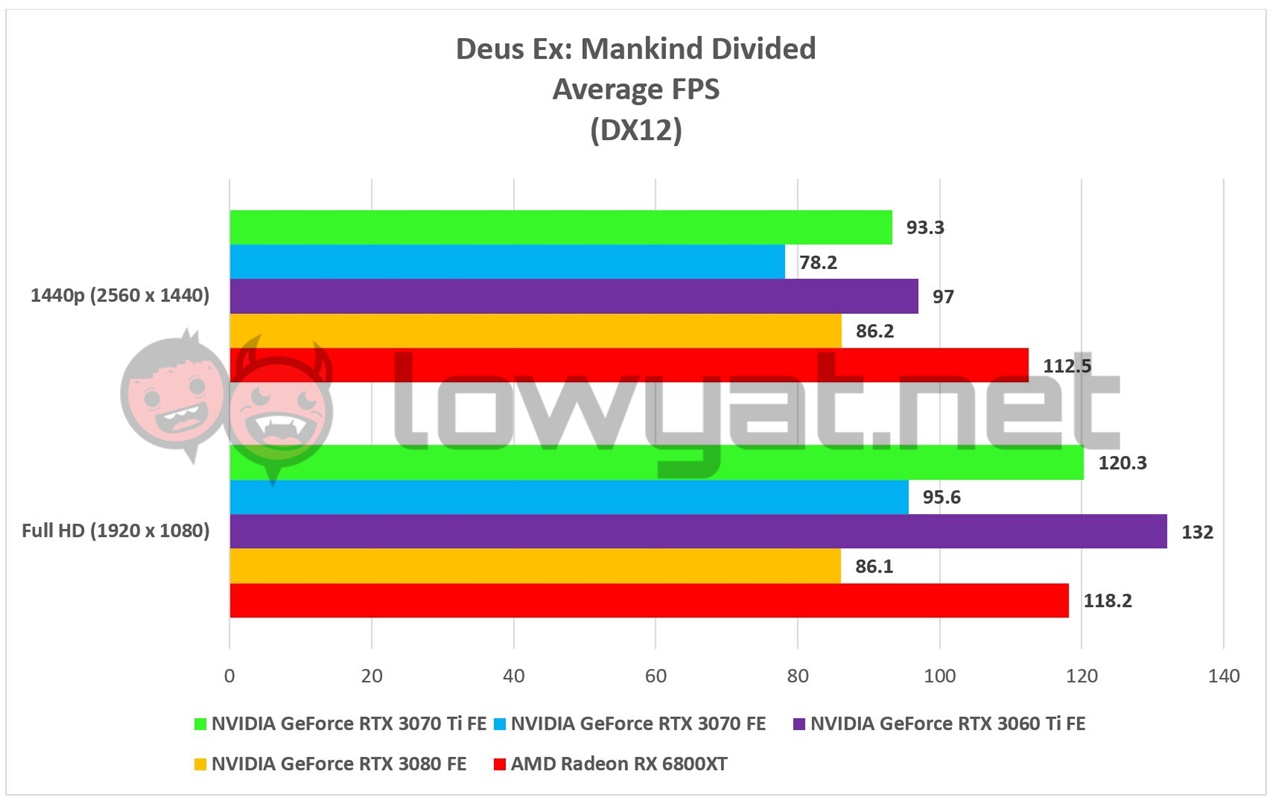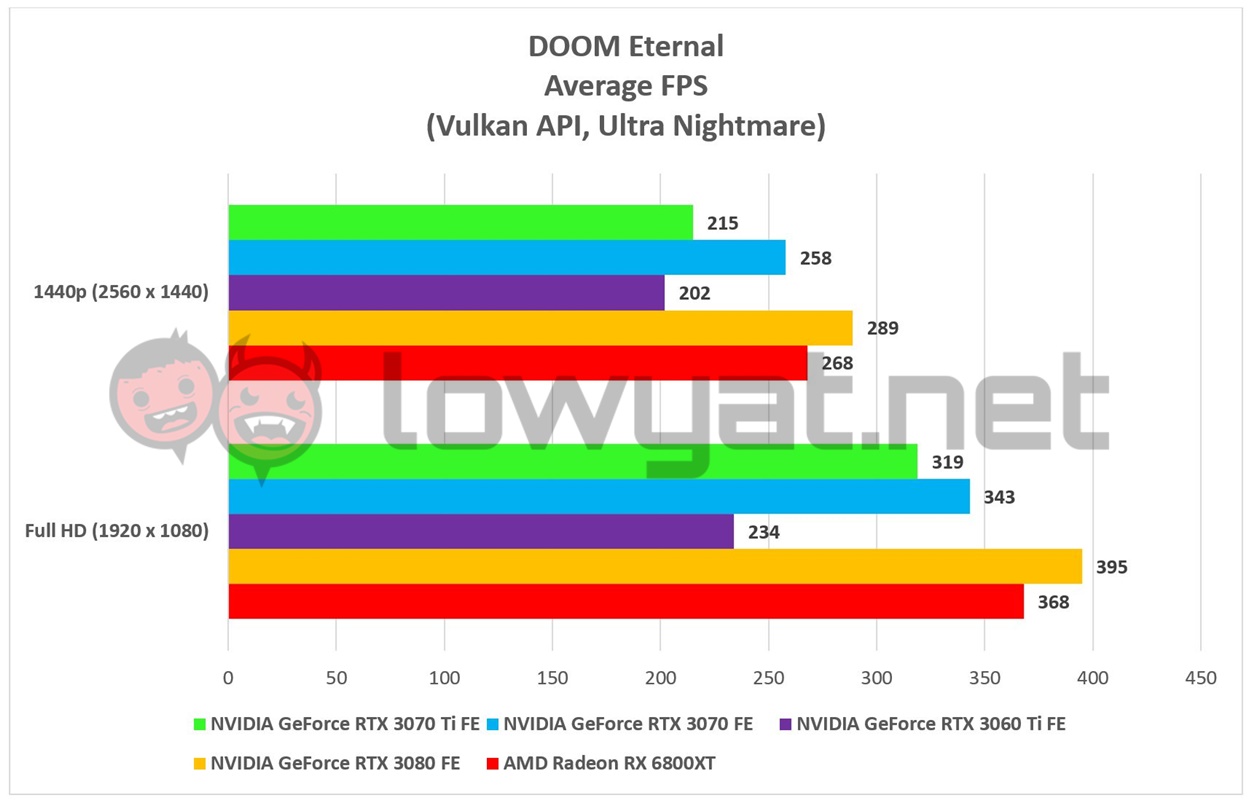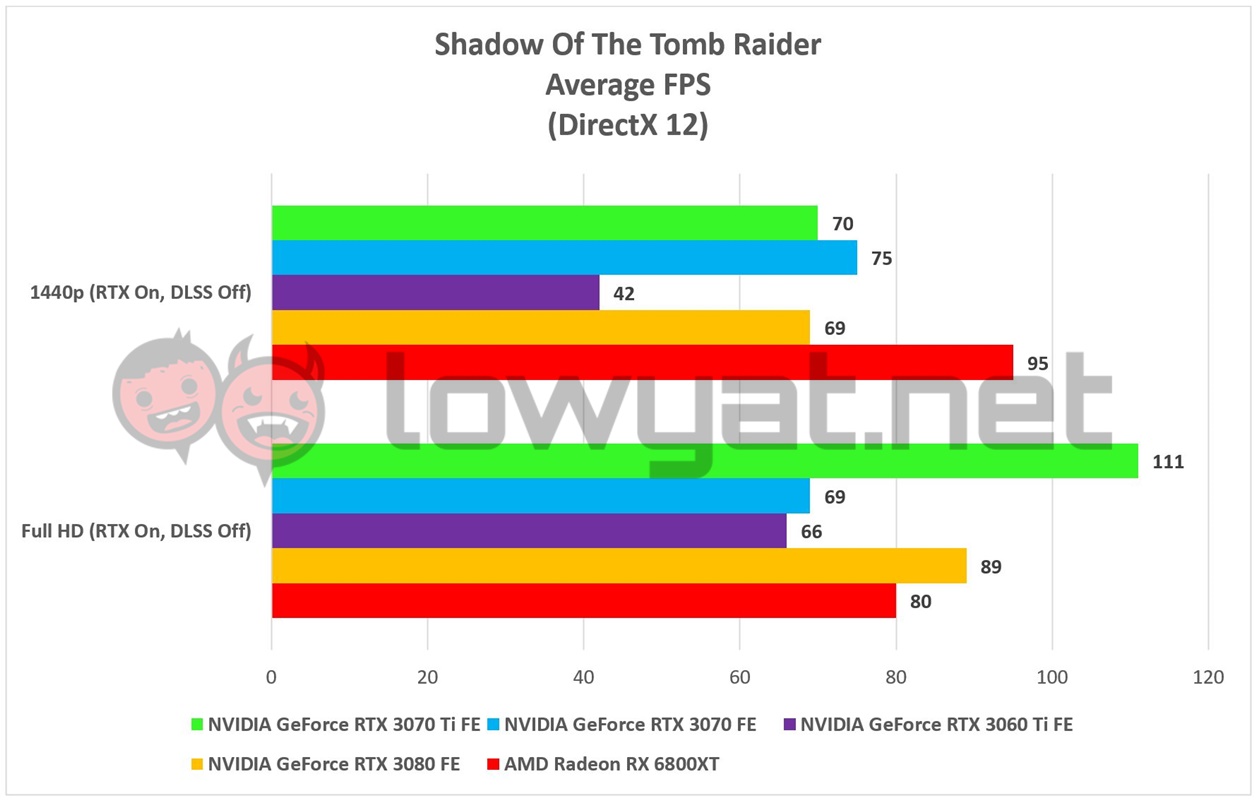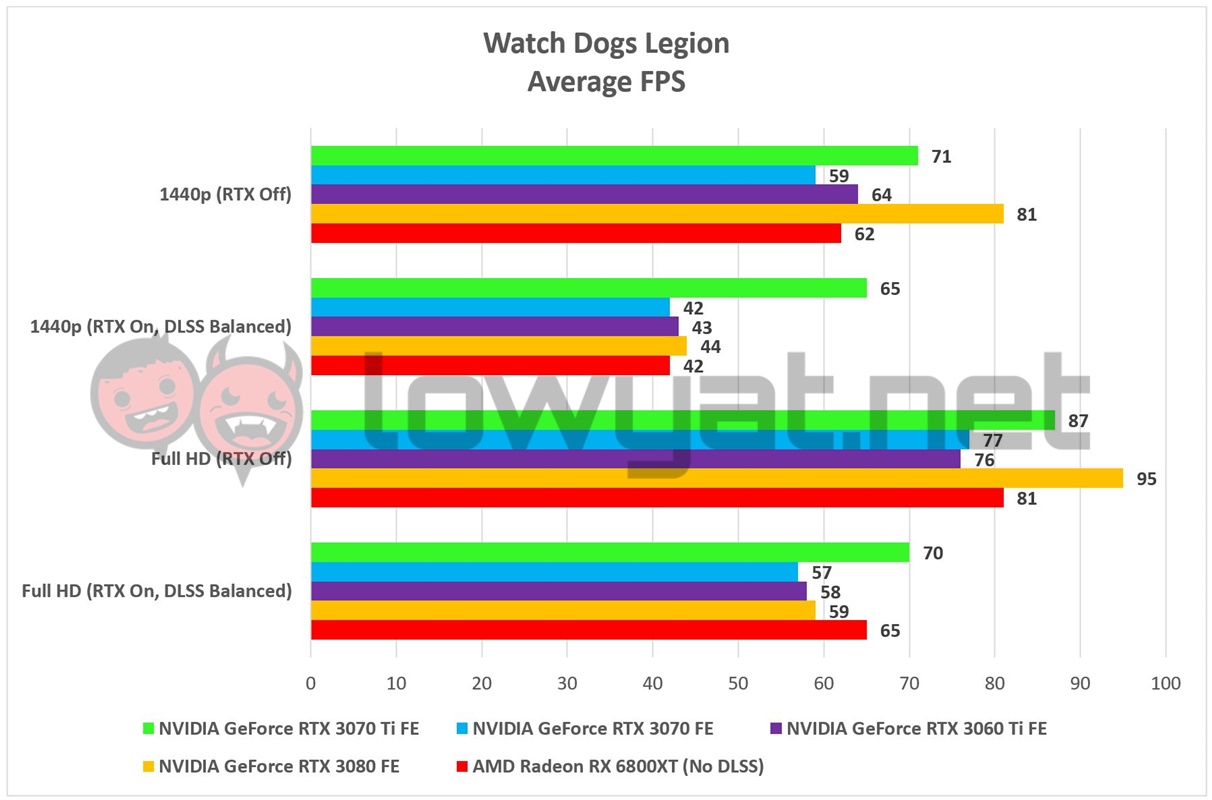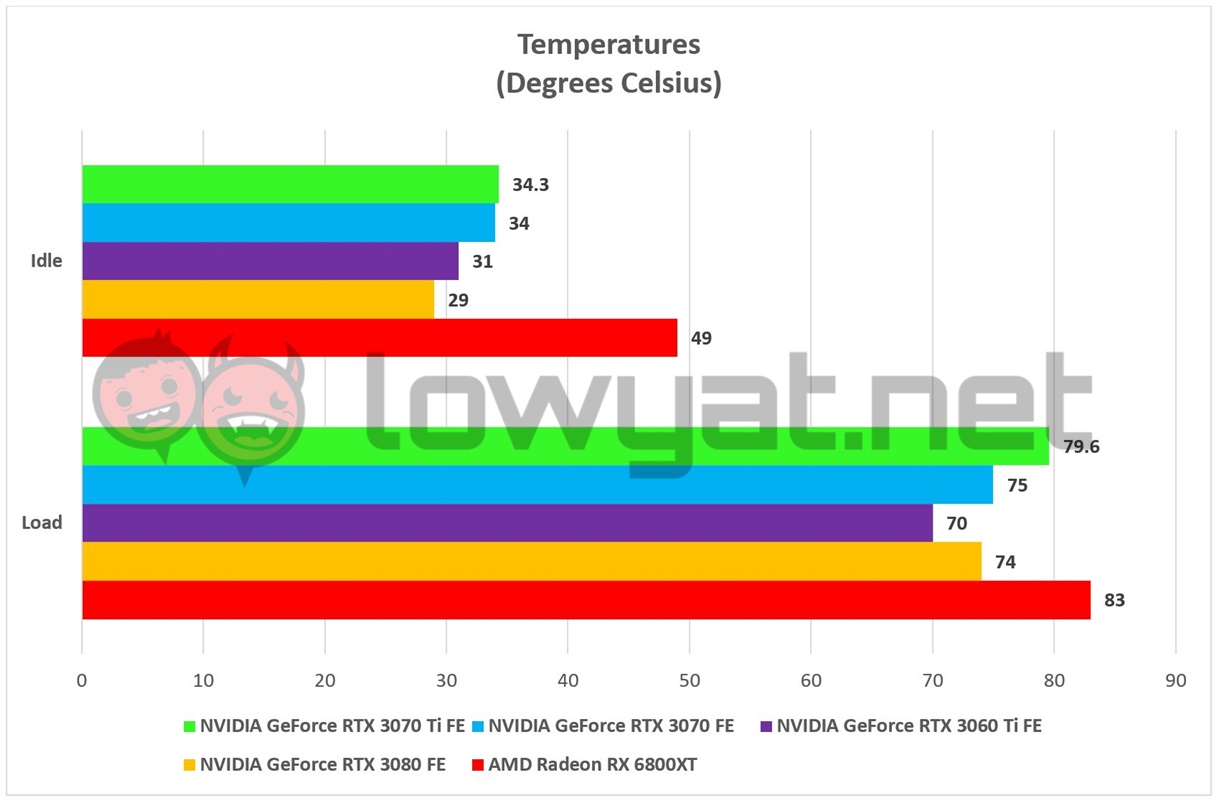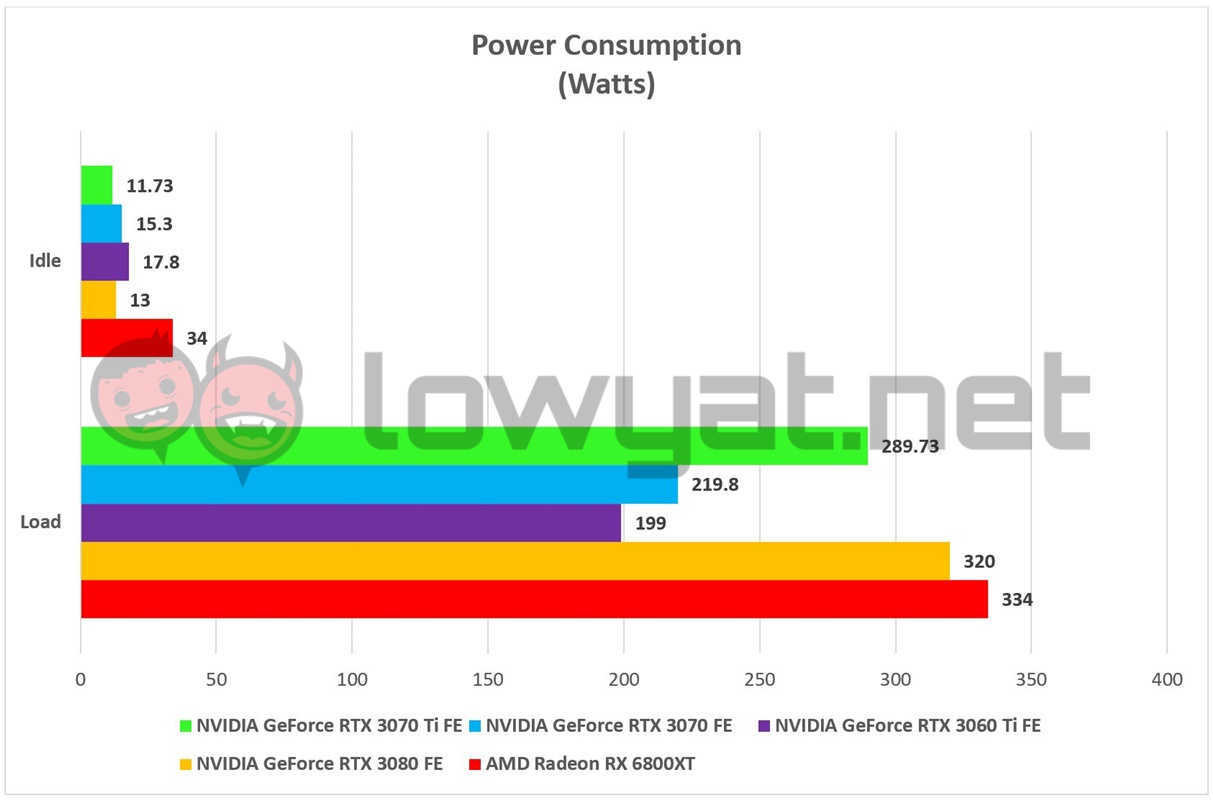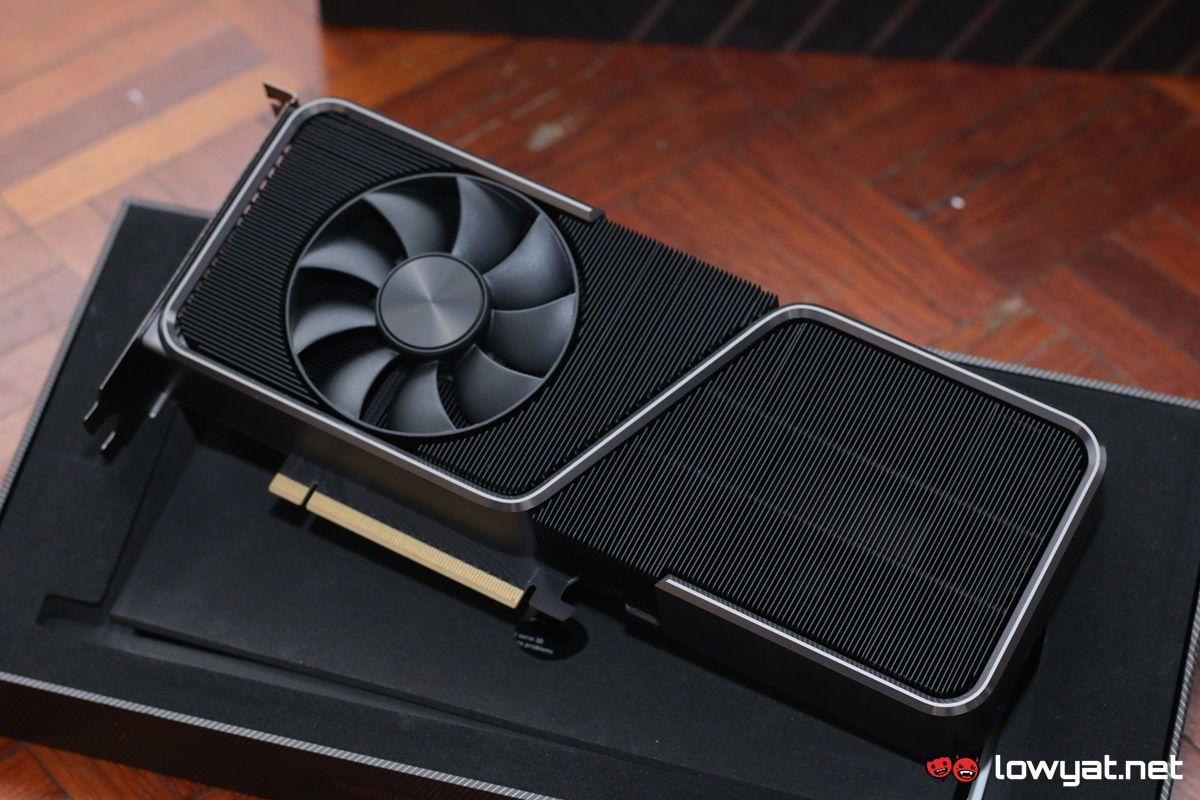As a tiered successor to the current RTX 3070, I am quite eager to find out just how much NVIDIA doped out the RTX 3070 Ti, especially since this is a card aimed at gamers who are comfortable with 1440p gaming.
Specifications
Like all GeForce graphics cards that get the “Ti” treatment, the internal specs of the RTX 3070 Ti are a significant bump up. The card uses the faster GDDR6X instead of GDDR6, of which there is 8GB. That, in turn, increases its bandwidth from 448GB/s to 608GB/s. On top of that, the RTX 3070 Ti also has 6144 CUDA cores – that’s 256 core more than the RTX 3070 – a slightly higher Boost clock of 1770Mhz, and the memory frequency runs at 19Gbps instead of 14Gbps. One of the specs that remains unchanged, however, is that the card still runs on a 256-bit memory bus. Of course, the increase in speed, cores, and shaders means that NVIDIA also has to increase the overall TGP from 220W to 290W.
Design
Because the RTX 3070 Ti is technically a member of the branch of RTX 30 series GPUs using NVIDIA’s GDDR6X graphic memory, and in order to make it distinguishable from the RTX 3070, the GPU maker clearly made the decision to alter both the card’s aesthetics and cooler shroud’s design.
The cooler shrouds combine the best of both (Founders Edition) worlds.
At a glance, NVIDIA is clearly mixing the best of two design languages with the RTX 3070 Ti; the shroud still mimics that of the Founders Edition of the RTX 3070 and RTX 3060 Ti and while it still uses the same Dual Axial Flow Through technology, it’s using the fan orientation of the RTX 3080 and RTX 3090 Founders Edition cards. Personally, I actually prefer this fan orientation for the simple reason that the dual front-facing fan design just looks and feels a little boring. In addition, the card is also slightly bigger than the RTX 3070 in size, but it is also slightly smaller than the RTX 3080 FE. Oh, and I should also mention that the shroud has a slightly shinier look, almost as though NVIDIA chose to polish it a little more than the RTX 3070.
Beneath the hood, the RTX 3070 Ti also uses the same ultra-compact PCB design, which in turn houses the card’s GA104 GPU. Bear in mind, the GPU is still based on the same 8nm process from Samsung and contrary to earlier rumours, it isn’t running on a new 7nm process node from TSMC. Like FE cards, the RTX 3070 Ti has to be powered via NVIDIA’s special 12-pin PCIe port. However, as I mentioned earlier, due to its beefier hardware, the card’s overall TGP had to be increased from 220W to 290W; instead of one 8-pin PCIe connector, the card now requires two.
Besides those difference, the I/O ports at the back of the card are basically the same. By that, I mean you get three DisplayPort 1.4a ports and an HDMI 2.1 port that outputs up to 8K resolution.
Testbench
My testbed remains unchanged in the review of the RTX 3070 Ti. In testing, the system is powered by AMD’s Ryzen 9 5950X, 16GB DDR4 RAM, and a 1200W PSU. Another thing I must state is that throughout the review, I merely ran the card out of the box and no overclocking was conducted with it.
Benchmarks
As you can see from the charts below, the RTX 3070 Ti is clearly superior to the RTX 3070, especially in the synthetic benchmark portion of the review. In comparison, the card averages nearly 15% in improvements over its non-Ti counterpart.
In gaming, the RTX 3070 Ti’s mileage unsurprisingly varied from title to title. For the record, I will state that I am able to game at 4K with the card, but as you can guess, the overall experience at that resolution is less than stellar and sometime unable to maintain even 30 fps with some titles. Dropping the resolution down to 1440p, however, alleviates that issue, but again, that margin of improvement depends on the title. For games like Control, the RTX 3070 is nearly on par with the RTX 3070 at 1440p, but clearly pulls ahead at Full HD resolution.
In Deus Ex Mankind Divided, the RTX 3070 Ti definitely shows off its prowess, with the card virtually dominating its predecessor across both 1440p and Full HD. DOOM Eternal sees the card having a little trouble pulling ahead of the RTX 3070, but ultimately, the card isn’t having any trouble keeping the average frame count above 200 fps across the board.
In Watch Dogs Legion, I am surprised to find that the RTX 3070 Ti is able to gain traction even against the more powerful RTX 3080 FE, more specifically with NVIDIA’s RTX and DLSS turned on. For that matter, I am going to chalk this up to the up-to-date drivers released by NVIDIA since the game came out. That said, running this game with all graphics setting maxed out and at 4K is impossible, simply because the game tells you that there just isn’t enough memory to pull it off.
Temperature And Power Consumption
Because of the higher TGP, I was already expecting the RTX 3070 Ti to generate more heat when put to the task. With an open testbench and the room’s ambient temperature set to 19°C, the card nearly reached 80°C. That’s actually pretty toasty and in a closed casing with ample airflow, I’m fairly certain we could see temperatures breaking past the 80°C threshold.
On that note, the RTX 3070 Ti’s power consumption is as advertised by NVIDIA, drawing nearly 290W off the wall when under stress.
Conclusion
When I reviewed the GeForce RTX 3070, I simply said that the card was impressive, especially as an option for 1440p gaming. With the GeForce RTX 3070 Ti Founders Edition, that clearly isn’t the case. At a starting price of RM2850, the GeForce RTX 3070 Ti Founders Edition has me asking: if NVIDIA could do this, why even bother with the RTX 3070 in the first place? Ultimately, the card’s feels like an RTX 3070 if NVIDIA were to have figuratively force-fed its steroids and continued to do so throughout its fabrication. To that end, I would definitely recommend this card to those who want a little more kick to their 1440p gaming session but, as it is with the current chip shortage, don’t be surprised if you end up paying a premium for your favourite custom-cooled model of the card.
